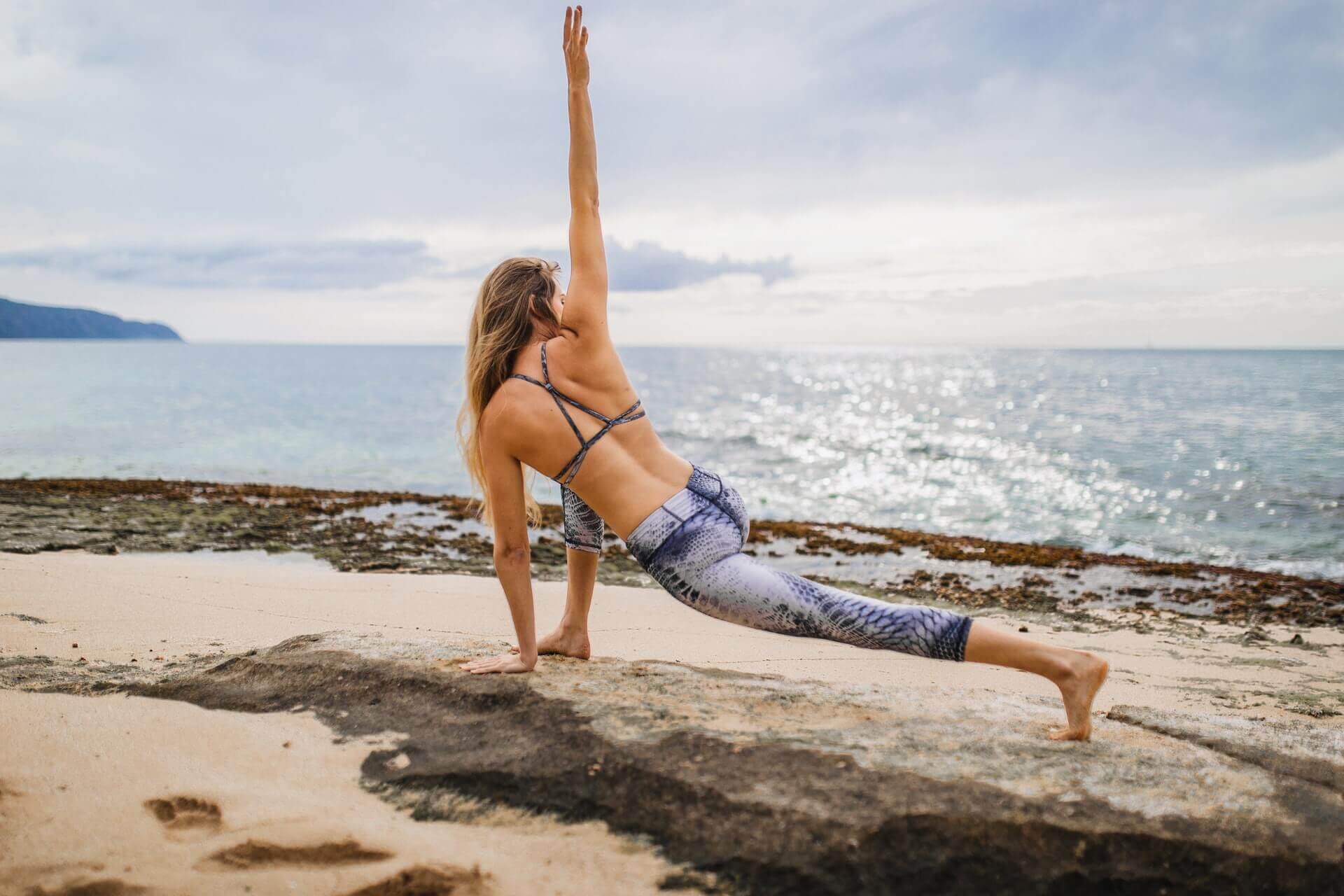Practicing Yoga for Improving immunity: Myth or Magic?

What is Immunity?
Immunity refers to the body’s capacity to keep infections at bay. Pathogens are foreign disease-causing substances, such as bacteria and viruses, to which people are constantly exposed.
Antigens are proteins that are linked to the surface of infections and provoke the body’s immunological response. An immunological response is the body’s defensive mechanism designed to combat antigens and protect the body.
What are the types of immunity?
Immunity is classified into three types: 1.Innate immunity, 2. Passive immunity, and 3. Acquired or Active immunity.
Active immunity is defined as the act of exposing the body to an antigen in order to elicit an adaptive immune response, whereas passive immunity is defined as “borrowing” antibodies from another individual.
1.Innate immunity:
Innate Immunity refers to a person’s innate protection, which includes physical barriers (skin, body hair), defensive mechanisms (saliva, stomach acid), and general immunological responses (inflammation). This sort of immunity is known as non-specific immunity. Although the immune system has no idea what antigen is entering the body, it can respond fast to protect against any infection.
2. Passive Immunity:
The ability of the body to fight viruses by “borrowing” antibodies is referred to as passive immunity. Antibodies, for example, can be given to a newborn by a mother’s breast milk or blood products containing antibodies, such as immunoglobulin, which can be transfused from one person to another.
The most prevalent type of passive immunity is that received by a newborn from its mother. During the last one to two months of pregnancy, antibodies are transferred through the placenta. As a result, a kid born at full term will have the same antibodies as its mother. These antibodies will protect the newborn from some illnesses and act to defend against certain antigens for up to a year. Because the body does not generate antibodies, passive immunity is only transitory until the antibodies are gone (wane).
3. Acquired Immunity:
The immunity that emerges through immunological memory is known as acquired (adaptive) immunity. When the body is exposed to a certain antigen (which is associated with a disease), antibodies are produced.
The body retains a memory of the specific antigen and has antibodies to combat it the next time it invades. When a person is exposed to an illness and develops immunity as a result, this is known as acquired immunity. Acquired immunity may also be acquired by vaccination, in which the vaccine imitates a specific illness and causes an immune response in the vaccinated person without making them sick.
What is Herd Immunity?
Yoga to improve Immunity:
Certain yoga poses can aid in immune system support, balance, and boost. It can also aid in the battle against oxidative stress, which is harmful to healthy cells. Yoga decreases stress systemically throughout the body, which minimizes inflammation and degeneration when practiced regularly.
Corona is a pandemic illness, however some numerous viruses and organisms affect the respiratory system and weaken the body’s immune system. Yoga is very significant in one’s life. Perhaps one of the most powerful and tried resistance boosters that we can use for a better life is yoga.
Yoga is a comprehensive practise that enhances both our physical and mental bodies. As a result, the body’s protection improves in such circumstances. A healthy existence may be easily attained if we learn to adopt a healthy modus vivendi, make appropriate eating choices, and practise yoga and meditation regularly. Ayurveda, yoga, and meditation are all excellent indicators of a healthy lifestyle.
Sun Salutation, also known as Surya Namaskar, is a 12-pose yoga sequence. Aside from being a great vas physical exercise, Surya namaskar incorporates all 12 asanas and is beneficial to both physical and mental well-being. Surya Namaskar is also said to have a hugely beneficial effect on both the body and the mind.

SURYA NAMASKAR'S 12 STEPS (SUN SALUTATION)
At least 20 suryanamskars should be performed daily for beginners, and more than 100 should be performed by a skilled person.
1. Pranamasana (Prayer Pose):
Pranamasana is that the 1st posture within the yoga sequence. To accomplish this create, stand upright on your mat and make sure that your feet square measure placed getting ready to one another. Next, take a deep breath, expand your chest, and relax your shoulder. throughout inhalation, raise your arms from the facet and whereas eupnoeic be a part of each your palms along as if you’re praying. The prayer posture or 1st salutation is complete.
2. Hasta Uttanasana (Raised Arms Pose):
Ensure that your palms square measure joined along, a bit like within the previous prayer creates. Take a deep breath, elevate your arms, and slightly bent backward. Your striated muscle should keep getting ready for your ears.
3. Hasta Padasana (Standing Forward Bend Pose) :
Breathe out and bend forward from your waist. attempt to bit the ground together with your hands. However, make sure that your spine remains straight. whereas performing arts this creates, you must exhale slowly and completely.
4. AshwaSanchalanasana (Lunge Pose) :
Bend your knees slightly, so that the palms will rest on the ground beside your feet. Take a deep breath, bring your right knee towards the proper facet of your chest, and stretch your left leg backward. Raise your head and appearance forward.
5. ChaturangaDandasana (Plank Pose):
Inhale and produce your right leg back similarly. currently each your hands are right below your shoulders. make sure that your body is parallel to the bottom.
6. AshtangaNamaskara (Eight boughed Pose):
This is conjointly spoken as salutations victimization eight points or elements. once performing arts ChaturangaDandasana, exhale and slowly bring your knees down toward the ground. Rest your chin on the ground and keep your hips suspended within the air. If done properly, each of your hands, knees, chin, and chest can rest on the bottom whereas your hips can stay suspended within the air.
7. Bhujangasana (Cobra Pose):
Rest your legs and midriff flat on the bottom. Position your palms beside your chest. Inhale and apply pressure on the hands to lift your higher body. At this time, your head and body part can gibe an elapid with a raised hood.
8. AdhoMukhaSvanasana (Downward Facing Dog Pose):
Keep your palms and feet wherever they’re. Exhale and gently elevate your hips, so that the body forms associate inverted ‘V’. Straighten your elbows and knees. Look toward your navel.
9. AshwaSanchalanasana (High Lunge Pose) :
After performing arts AdhoMukhaSvanasana, return to AshwaSanchalanasana by conveyance your right foot forward. Keep your left leg stretched behind you and appearance forward.
10. Hasta Padasana (Standing Forward Bend):
Inhale and produce your left foot forward, specified it’s next to your right foot. Keeping the position of your hands intact, exhale, and slowly bend your body part to enter into the Hasta Padasana create.
11. Hasta Uttanasana (Raised Arms Pose):
Inhale and elevate your higher body. be a part of the palms and lift your arms on top of your head. Then bend backward as you probably did in step a pair of.
12. Pranamasana (Prayer Pose):
This is the last step. take a breath and stand straight during a relaxed manner. Lower the arms and hold your palms before your chest. This marks the top of the primary set of Surya Namaskar.
Benefits of Surya Namaskar:
- The postures are a good combination of warm-ups and asanas.
- Improves blood circulation
- Strengthens the centre
- Tone the gastrointestinal tract
- Stimulates abdominal muscles, Respiratory, vascular system, spinal nerves, and various internal organs
- Tone the spine, neck, shoulder, arms, hands, wrist, back, and leg muscles, promoting overall flexibility.
- It calms you down and boosts your energy levels by regulating the relationship between your body, breath, and mind.
- Surya Namaskar is also beneficial for weight loss, hair maintenance, and general well-being.
- You’ll gradually increase the number of rounds while seeing the pounds melt away. The stretches and bends both help you shed fat tissue.
- Surya Namaskar promotes blood circulation to the scalp, avoiding hair loss.
- The hyperbolic blood circulation nourishes the top and allows for healthy hair development.
- Surya Namaskar promotes blood circulation to any or all parts of the body, therefore it’s great for bright skin.
Try this Surya Namaskar with guidance of a Guru and Get your immunity level increased in the pandemic.

